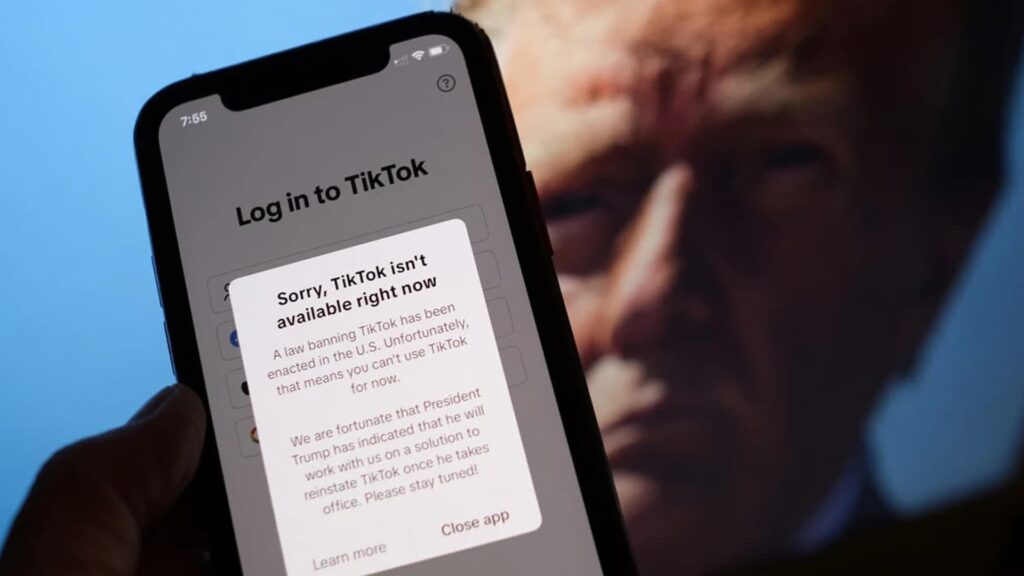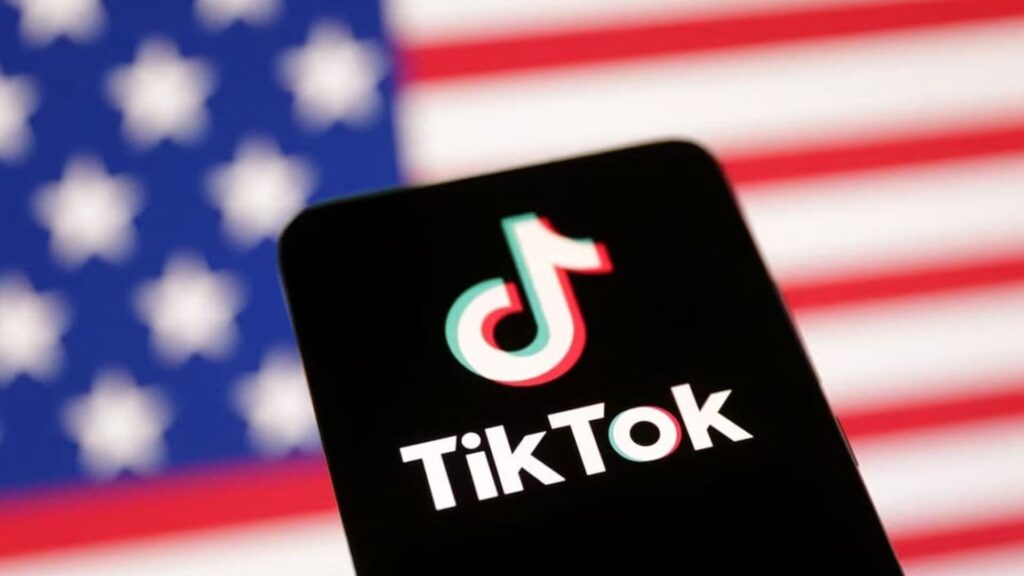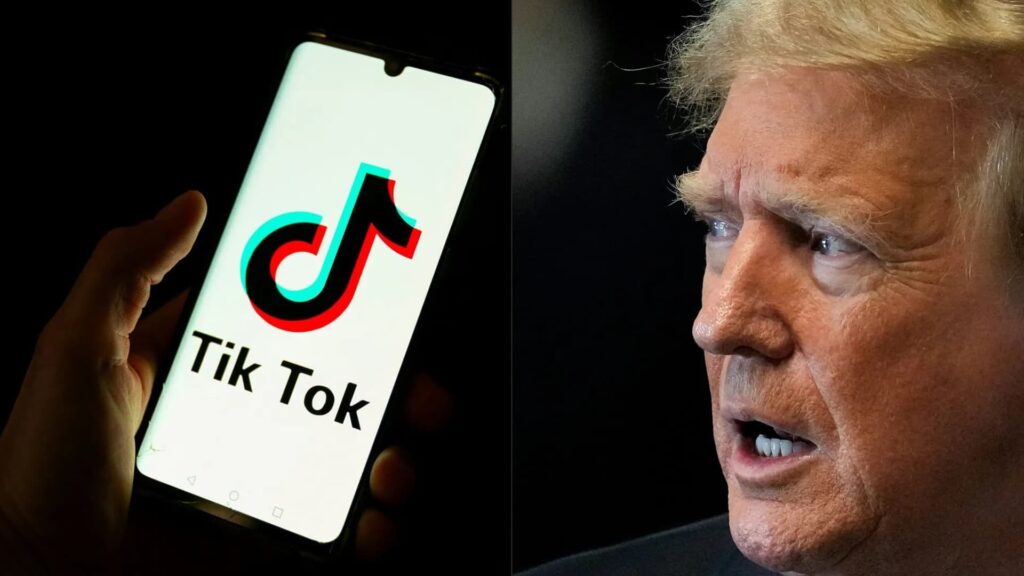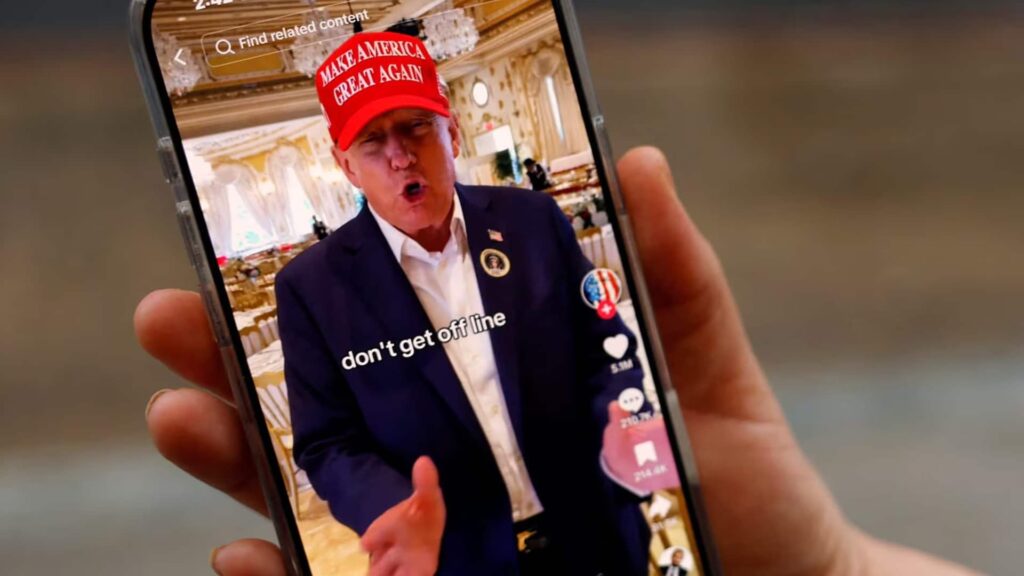The news of TikTok banned in US is circulating, impacting creators and businesses. Following months of political and legal arguments, TikTok, one of the most widely used social media sites worldwide, was on the verge of being banned countrywide in the US.
The escalating conflict between technology, national security, and international politics is exemplified by the U.S. TikTok ban news. President-elect Donald Trump has temporarily saved the app, but ByteDance needs to move fast to find a permanent solution.
Donald Trump offered a 90-day extension for TikTok just hours after the ban started. To address the issue, he promised to support a joint venture that would give American businesses ownership of TikTok.
When TikTok started restoring service, a popup message read, “Welcome back!” The platform expressed gratitude to Trump for guaranteeing its survival.
Nonetheless, there are political and legal aspects of TikTok banned in US.
Significant concerns regarding freedom of expression against national security were brought up by the TikTok ban news.
First Amendment Issues: TikTok and its users contended that the ban curtailed their freedom of expression and communication.
National Security: Lawmakers stressed the importance of safeguarding private user information against possible abuse by foreign enemies.
TikTok banned in US: impact on Creators and Users

Millions of American users were affected by the restriction, especially content creators who depended on TikTok for their income. While some creators complained about losing a distinctive community after TikTok ban news, many others uncontrollably searched for other platforms.
Despite being back online, TikTok’s future in the US is still up in the air. ByteDance needs to either negotiate a solution that takes security concerns into account or sell its U.S. operations. A long-term solution might be offered by President Trump’s proposed joint venture, in which American businesses would hold 50% of TikTok.
The TikTok ban news in US is the convergence of technology, national security, and international politics. The platform’s brief closure brought attention to the dangers of relying too much on apps owned by foreign companies, but it also sparked debate over free expression and censorship. As TikTok negotiates legal, political, and commercial obstacles to ensure its future in the US, the upcoming months will be crucial.
What Caused TikTok banned in US?

Because TikTok is owned by the Chinese corporation ByteDance, the U.S. government blocked the app on January 19, claiming national security concerns. Lawmakers were concerned that TikTok might provide the Chinese government access to user data, endangering the privacy of American users.
ByteDance was threatened with a total TikTok banned in US if it didn’t sell TikTok to an authorized U.S. company by January 19, 2025, as per a law established in April 2024. Due to national security concerns about its parent business, ByteDance, which is based in China, the United States banned TikTok.
The app’s future in the United States was in doubt for months due to legislative and judicial proceedings, which finally resulted in a TikTok ban news on January 19, 2025.
Important Occurrences That Led to the TikTok Banned in US

U.S. Government Encourages Action in April 2024
- A law mandating TikTok to sell its U.S. business or face a TikTok banned in US was passed by the House of Representatives on April 20, 2024, with decisive bipartisan support (360-58). Rep. Hakeem Jeffries, a Democrat from New York, raised grave concerns over data privacy, surveillance, and undercover activities.
- By a vote of 80-19, the Senate passed the bill on April 23, 2024. Sen. Maria Cantwell (D-Wash.) stressed the importance of safeguarding Americans from foreign threats, particularly government workers and members of the armed forces.
- The bill was passed into law by President Joe Biden on April 24, 2024, paving the way for TikTok to be either sold or prohibited by January 19, 2025.
May 2024: The Start of Legal Challenges
- TikTok sued the federal government on May 7, 2024, claiming that the law restricted freedom of expression and thereby violated the First Amendment.
- Eight TikTok users entered the legal struggle on May 14, 2024, when they filed a complaint against the government. They said that the prohibition violated their rights to free speech and content sharing and was “unconstitutionally overbroad.”
Judicial and Legislative Developments
December 2024: TikTok’s Legal Setbacks
- December 6, 2024: TikTok’s request to have the statute reviewed was denied by the U.S. Court of Appeals for the D.C. Circuit. A three-judge panel decided that TikTok’s claims of First Amendment breaches were outweighed by national security considerations. TikTok’s appeal to have the decision halted was likewise turned down by the court.
- December 16, 2024: While the Supreme Court considered the matter, TikTok asked for an injunction to halt the ban. According to TikTok, this would spare millions of users from interruption and give time for an “orderly review.”
- December 18, 2024: Days before the bill was scheduled to go into effect, the Supreme Court declared it would hear oral arguments on January 10, 2025.
Supreme Court Review
TikTok had hoped after the Supreme Court decided to consider its case. But in the end, the Court supported the federal government’s national security defense and sustained the prohibition.
Furthermore, the prohibition went into effect at midnight on January 19. Users were no longer able to use TikTok’s website or app after it was taken out of the US app stores.
“You can’t use TikTok for now,” the platform said in a statement, and the business said it hoped the issue would be resolved.
2025 January 19, 12:00 a.m.: The TikTok countrywide ban formally went into effect. The app was taken down from the Google and Apple app stores, and the TikTok website stopped working in the United States.
Users were informed by TikTok that services were temporarily unavailable because of legal restrictions.
Since the prohibition interfered with their main source of communication and revenue, content creators expressed their disappointment and frustration.
Some content creators were worried about losing their money and community connections, while others immediately started bidding their followers farewell with tears in their eyes. This was the first nationwide blocking of a major social media network in the United States.
The involvement of President-elect Donald Trump to restore service

To stop the TikTok banned in US, Donald Trump, who was scheduled to take office on January 20, got involved. At a pre-inauguration event on January 19, Trump declared that TikTok would be back right away. To give ByteDance additional time to negotiate a sale, he pledged to issue an executive order postponing the ban by ninety days. To turn TikTok into a source of income for the American economy, Trump also suggested a “joint venture” in which American businesses would hold 50% of the app.
TikTok started to restore service for American users around the afternoon of January 19. “Welcome back!” was the message’s greeting to users, which also thanked Trump for making sure the network could continue to function. ByteDance is still being pressured to sell TikTok’s U.S. business to comply with the legislation, even with this short-term fix.
Nonetheless, the impact of TikTok ban news impacted Millions of American users, and artists were in confusion due to TikTok’s short closure and unclear future. The TikTok banned in US is a major cultural and economic issue because TikTok has about 170 million users in the United States.
Although TikTok is again back online in the United States, its future is still unclear. The requirement that ByteDance sell TikTok to an American business must still be met. The app may be banned once more if no agreement is reached in the following ninety days. A long-term solution that addresses national security concerns and permits TikTok to operate in the United States may be offered by Trump’s planned joint venture.
Although TikTok has already been prohibited from government devices due to security concerns, the U.K. government has declared that it has no plans to restrict the app for consumers.
Similar limitations on TikTok for official usage have been put in place by other nations, such as the European Union, however a complete ban for the general public has not been enforced.













